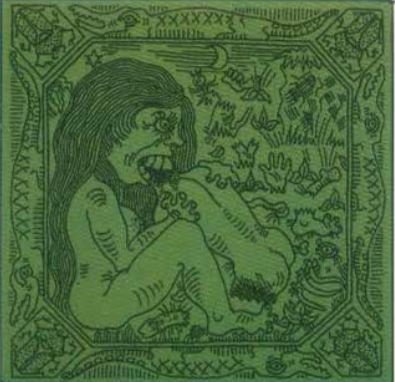The Cursed Basano Vase of Italy
For centuries a common wedding gift given to brides of royalty and wealth were intricate and expensive vases. Going back to the 12th century the Duchess Eleanor of Aquitaine gifted her husband-to-be, King Louis VII, a rock crystal vase. So it wasn’t unusual when a woman in the 15th century received a vase as a wedding gift… except this vase was silver and plain looking.
There were no intricate markings, no lavish decorations, and it certainly didn’t appear to be expensive but, if you believe the legends, the vase contained a curse that would continue to take lives for the next 5 centuries.
Wedding Night
We don’t know much about the woman who received the Basano vase in the 15th century other than her wedding taking place in a northern village close to Napoli, Italy. The stories say she didn’t know who gifted her the 4-pound silver vase but she took it to her room for safekeeping.
Later when the wedding was to start, she was nowhere to be found. Her husband-to-be searched for her and found her in her room, lying on the ground, clutching the vase with a fierce grip. Moments later she was dead.
After her funeral, the Basano vase was given to one of her family members for safe keeping but within days they were also dead. At the time, no one thought the vase was the cause and it was given to another family member to hold.
Days later, they were dead as well.
The family put it together and reached out to a priest for guidance. They believed whoever gifted the bride the vase put a curse on it or had it made with cursed materials. They were instructed to bury it on sacred grounds.
Many believe it was buried near the same church where the priest resided but it’s not exactly known where it was buried as the vase doesn’t show up again for 500 years.
“Beware… This Vase Brings Death”
In 1988 an unnamed man happens to dig up the vase in Italy and within it, he finds a note reading, “Beware… This vase brings death.” The man ignores the note, tossing it away, and brings the vase to an auction house.
As it is an antique, it sells quickly to a local pharmacist for 4 million Lire equivalent to 2,065 euros or $2,270 today. Three months later the pharmacist is dead and his family has sold the vase to a 37-year-old doctor. A few months later, he is dead as well.
At this point, the vase starts gaining a reputation and no one is willing to purchase it. Except for a collector and archeologist who gladly purchases it despite his family’s wishes. Three months later the archeologist dies from an unknown and mysterious infection.
Distraught and afraid, the family of the archeologist tosses the vase out of the window but this is witnessed by a passing police officer. The officer attempts to bring the vase back but the family refuses to take it, warning the officer to dispose of it quickly if he wishes to live.
The officer attempts to give the vase to various museums but each have already heard of the curse and refuse. With no other choice and fearing for his own life, the officer places the vase in a lead box and buries it in a sacred ground of a cemetery.
It’s not known what cemetery he buries it in but since then the vase has disappeared from history with no other reported sightings or deaths.
Variations to the Legend
Unsurprisingly for a cursed object that seems to pop up randomly in history and with a legend that gives almost no identifying details, there are a few variations to its supposed story.
Some versions say the bride in the 15th century made the vase herself as a gift for her husband on their wedding day and her death wasn’t mysterious; she was murdered by an unknown assailant. She was found clutching the vase as her life slipped away promising to get her revenge on the one who killed her.
Many claim this is what created the curse and it is actually the malevolent spirit of the bride haunting and murdering all the future victims. After the deaths of several of her family, one version states the vase was not buried but kept in the church as it was a holy place. Over the course of centuries, the church was either torn down or destroyed leading to the disappearance of the vase.
After it was found in 1988 and after the string of deaths, the family of the archeologist threw the vase out of the window but instead of it being witnessed by the cop; the cop was actually hit by it. In this version, the cop felt the evil residing in the vase and decided to bury it after seeking counsel from the church.
Though it appears the vase and its curse disappears from history at this point, it’s more likely the curse never existed. If we think about the number of details we have while at the same time not having any identifying details, besides a grainy picture, it’s no wonder its existence is sometimes called a paradox.
The Basano Vase Paradox
Looking at the legend with a skeptical eye we find that there are no names for any of the characters in the story. Even when the vase was said to have reappeared in 1988, no one has a name; the man who found it, those who died, or the cop. Locations are nameless as well, where it was found in Italy is not named along with the auction house and the cemetery.
Yet with all these missing details, the Basano Vase is listed on many websites and magazines as one of the most cursed objects in the world.
Looking at the legend itself raises a bunch of questions as well. The first is a silver object carrying a curse; silver was often used to ward off evil and was seen as a healing metal throughout history. It would be unlikely that many in the 15th century would consider an item coated in silver as a ‘cursed’ object.
Then in the 20th century, the police officer attempts to give the vase to a museum before burying it. Considering how many supposedly cursed objects sit in various museums today such as objects from King Tut’s tomb and Thomas Busby’s Chair, it seems highly unlikely a museum would refuse to house a 15th-century antique vase.
In the end, the only thing we do have is the grainy picture of a vase that may or may not be the Basano Vase or even a vase from the 15th century. If the vase did pop up in 1988, it’s more likely the story and legend were made up by the unnamed man who found it in order to drive up the price at auction.
Related Article: The Curse of Thomas Busby’s Chair of Death
Other Sources
Basano vase, CC BY-SA 4.0, via Wikimedia Commons
Learn a Little Bit of Everything!
Myths, Mysteries, & Monsters













